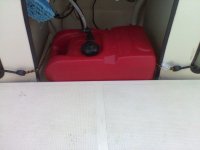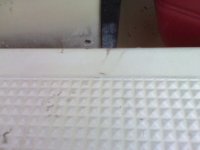jhayes1068":21pl97ki said:
Folks I'd been serious about buying a C-Dory and up until the last couple of days I assumed the design with the glass enclosed balsa wood and the manner that the boats were manufactured, that they were a top line boat for the money. Now having read about all of the water intrusion problems into areas of the boat that should be dry, I'm having second thoughts about the boat. I'm concerned that a boat as new as a 2007 would have the problem after all of the years of manufacturing.
Is this a problem that's common throughout the different years and sizes of the boat? :?: Thanks, Jim
Virtually all the problems are with the boats larger than the 22's, specifically the ones with complex floor, hull, and cabin integration designs.
The more modern C-Dory 22's and smaller boats with balsa floors have been trouble free, if properly cared for. .
The older "Classic" pre-1987 22's have plywood encapsulated floors and transoms that can be a problem if water is allowed to intrude.
Most of all of the C-Dorys have transoms that have plywood encapsulated in them that can have problems with water intrusion if not cared for properly.
Thoughtful care and watching can eliminate these water intrusion problems.
Hardware must always be installed so that it doesn't compromise the water integrity of the encapsulated plywood, balsa, or foam.
Any boat should be routinely carefully inspected to see that any balsa, plywood, or foam core is not compromised with water intrusion, and you can doubly emphasize that point when considering a boat to purchase.
I have a 1987 C-Dory 22 that has never had any water intrusion or leak problems, including the many problems currently discussed on this site.
I was thinking of adding a comment or two regarding the great number of leak and water intrusion problems brought on by the complexity of the more complex hull and floor designs, but thought owners of those boats would find it disparaging, but it's so obvious that there's no real news there to anyone.
Our discussions often come down to the KISS Principle. Simple is better, period.
It's fairly obvious that boat builders do not have bottom line fool proof methods of joining multiple layered fiberglass and core composition materials in more complex designs. At least what the present discussion shows, along with the fact that hurry-up mass production short-cuts often lead to design compromises the the boats produced that do not function properly.
Sadly, Joe. :disgust :thup



